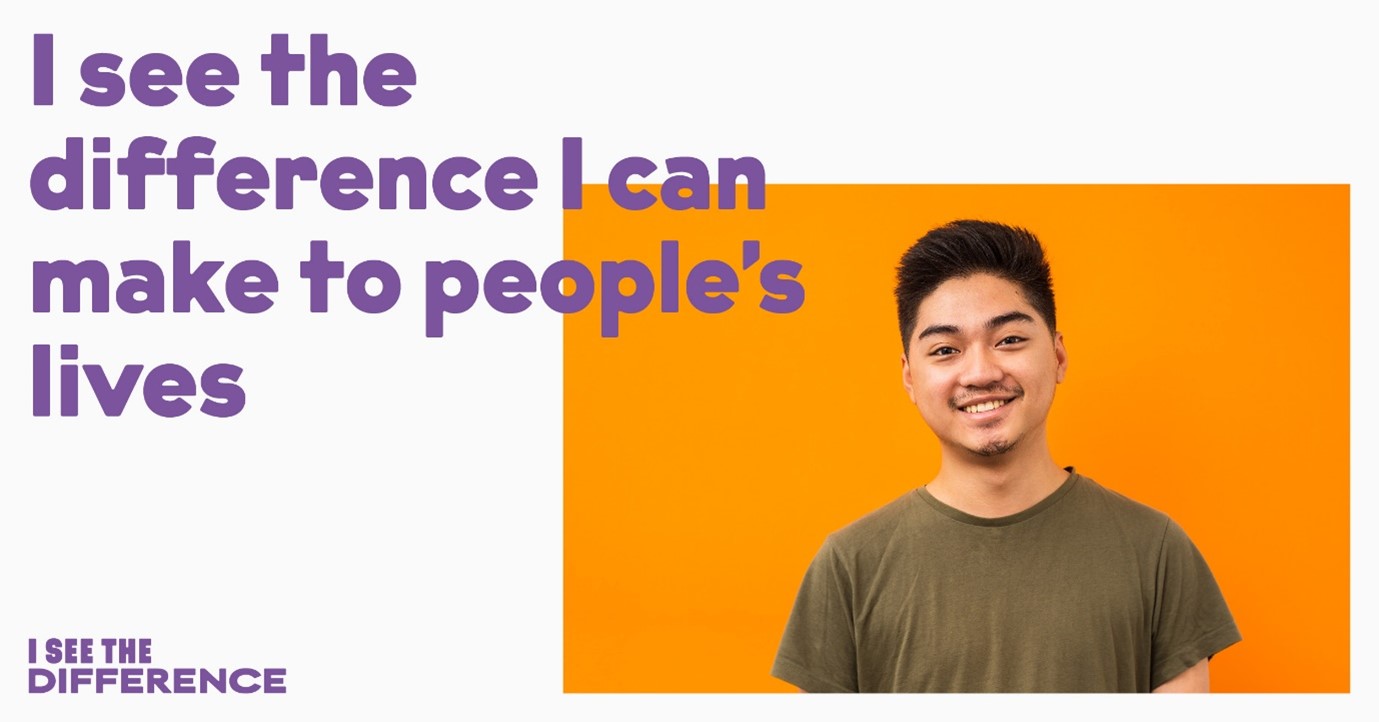A major OfS-funded programme is helping boost student recruitment to courses leading to vital roles in the allied health professions.

The allied health professions (AHPs) are a group of specialist roles covering a range of diagnostic, therapeutic and support services. Allied health professionals use their knowledge and skills to help their patients live the fullest lives possible.
The Strategic Interventions in Health Education Disciplines (SIHED) programme was launched in 2018 to increase the recruitment and retention of students to AHP courses. An accompanying publicity campaign, 'I See the Difference’, included testimonials on the benefits of working in these roles, and the satisfaction of watching patients progress and improve as a result of their work. An independent evaluation, published today, looks at the impact of the programme.
Scoping the problem
Allied health professionals support older people, people with chronic diseases, disabilities, mental and physical health conditions or musculoskeletal problems, and those in need of rehabilitative care. Their expertise is in high demand. In particular, the aging population (nearly 25 per cent of people in the UK will be aged 65 and over by 2050) will continue to fuel this demand. To meet future workforce and patient needs, it’s vital that high-quality, sustainable AHP courses continue to be available.
Some AHP courses face particular challenges. They are highly specialist and operate at a small scale. There is generally limited awareness and understanding of these among prospective students – in particular, of orthotics and orthoptics.
While the SIHED programme spanned all AHPs, it paid particular attention to four professions considered to be especially vulnerable:
- orthoptics
- podiatry
- prosthetics and orthotics
- therapeutic radiography.
Male participation in nursing and allied health courses
As part of the SIHED programme, the OfS commissioned research into male participation in nursing and AHP courses. We also published a blog from a student in diagnostic radiography, reflecting on his own experience and the sense of fulfilment his work brings him.
Assessing impact
In trying to assess the impact of the SIHED programme, we need to recognise that the recent improvements we’ve seen will not be solely a result of the programme. Other campaigns such as 'We are the NHS', and the introduction of a £5,000 bursary in 2020-2021 for many AHP undergraduate students, are also likely to have played an important part in generating interest. In addition, positive public perceptions about the work of the NHS during the pandemic has led to increased interest in a variety of healthcare professions.
Nonetheless, the report by SQW finds that the SIHED programme has played an important part in raising awareness of the four professions listed above, as well as of other AHPs. This was achieved largely through extensive engagement by outreach officers (with over 25,000 young people and 1,500 educational professionals at 470 face-to-face and virtual events) and the promotional impact of the I See the Difference website (which attracted 345,000 new unique individual visits).
The report found that nine out of 13 course leaders across the four professions consider their courses to be less vulnerable than in 2018. Taken as a whole, we have witnessed relatively modest enrolment increases for courses across the four target professions since the programme launch. However, the impact of the programme has varied by subject and higher education provider. For example, orthoptics was commonly cited as a real success, with courses seeing increases in both applications and enrolments and respondents attributing most of this to the SIHED programme.
In addition, new postgraduate courses and degree apprenticeship routes have been developed for podiatry, orthoptics, and prosthetics and orthotics, and are due to launch in the next couple of years.
We hope to see the positive trend in applications and enrolments continue, given that much of the outreach work was targeted at schools to inform student decision-making and raise awareness of these professions as career options.
The importance of collaboration
The report finds evidence that the SIHED programme inspired significantly increased collaboration between the health and health education professional bodies, higher education sector bodies and other stakeholders (the Council of Deans of Health, Universities UK, Health Education England, and the Allied Health Professions Federation). The benefits to students and to the professions are being seen in strengthened connections between the health and higher education sectors. Examples include:
- volunteering by members of professional bodies to provide careers talks at local schools and colleges, in partnership with Inspiring the Future
- provision of resources to enable members to support or host work shadowing and work placement opportunities for students in orthoptics, podiatry, prosthetics and orthotics
- enhanced learning and reflection by AHPs through commissioned research and Challenge Fund activities in partnership with the higher education sector.
Legacy and next steps
The report makes 10 recommendations to ensure the legacy of the SIHED programme. These include a more targeted approach to outreach work and greater alignment with national campaigns to maximise communications about AHPs.
While the main bulk of the programme has now concluded, the OfS will continue to fund some aspects until February 2022, under the management of the Council of Deans of Health. The focus will be on capturing learning, sharing resources and maintaining the marketing and communications campaign, most notably through the continuation of the I See the Difference campaign.
We hope to sustain the momentum built by the SIHED programme, and to continue to raise awareness of allied health professions as career options for young and adult learners alike, to support our health service and the post-pandemic economic recovery across the country.

Comments
Report this comment
Are you sure you wish to report this comment?